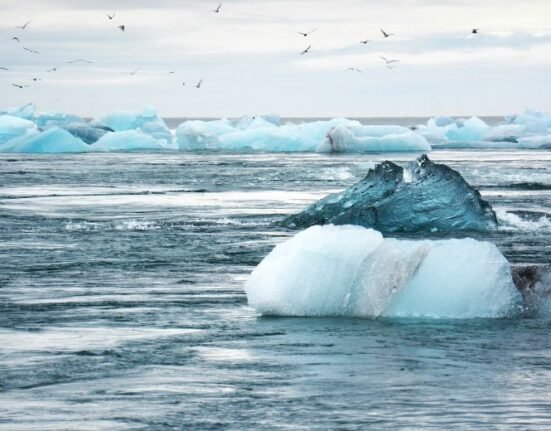HQ Team
July 13, 2023: A hunting community, as far as Northeastern Greenland has some of the world’s highest concentrations of harmful polyfluoroalkyl substances (PFAS), a Danish study found.
The Ittoqqotoormiit community, formerly Scoresby Sound, had a population of 345 in 2020 and has one of the remotest settlements on Earth.
The high levels of PFAS concentrations in the community are primarily originating from their food, according to a study done by Danish researchers at Aarhus University.
Predators at the top of the food chain, such as ringed seals, toothed whales, and polar bears have high PFAS concentrations.
Liver disease, cancer
Epidemiological studies have linked exposure to specific PFAS to a variety of health effects — altered immune and thyroid function, liver disease, lipid and insulin dysregulation, kidney disease, adverse reproductive and developmental outcomes, and cancer.
The Danish study, published in the Lancet Planetary Health, showed that 92% of residents in Ittoqqortoormiit have far more PFAS in the body than the European Food Safety Authority (EFSA) recommends to avoid damage to the immune system.
In addition, 86% of the inhabitants have blood values that are higher than EFSA’s threshold value for serious risk of damage to the immune system.
PFAS chemical components break down very slowly over time.
Food products, environment
Because of their widespread use and their persistence in the environment, many PFAS are found in the blood of people and animals all over the world.
They are present at low levels in a variety of food products and in the environment, according to the US Environmental Protection Agency.
They are found in water, air, fish, and soil at locations across the globe. There are thousands of PFAS chemicals, and they are found in many different consumer, commercial, and industrial products.
This makes it challenging to study and assess the potential human health and environmental risks.
PFAS is used in almost all industries and is found in many products such as textiles, carpets, shoes, food packaging, cosmetics, fire foam, and pesticides.
The substances are transported to the Arctic through the atmosphere and ocean currents. When they are released into the environment, PFAS is bio-magnified through the food chain.
‘Threaten public health’
Christian Sonne, professor at the Department of Ecoscience, Aarhus, said pollution with PFAS was “critical” in many parts of the world.
National and regional legislation must go hand in hand with the UN’s sustainable development goals and the Stockholm Convention in order to phase out PFAS,
“If measures are not taken quickly, such as a ban on PFAS and the use of alternatives to PFAS, pollution of the environment will continue to threaten public health around the world”, he said.
On February 7, 2023, the European Chemicals Agency published a proposal to limit the production, use, and marketing of more than 10,000 PFAS substances in the European Union.
The purpose of the proposal was to limit the spread of PFAS substances. As a rule, the use of PFAS will be banned in general in the EU, and not in various pesticides. Similar actions were underway in the US.
The researchers found that PFAS levels in the blood were generally higher in European countries and North America compared to countries in Asia and Africa.
The highest concentrations were found in Greenland, the Faroe Islands, Denmark, Australia, Sweden, Norway, Malaysia, the US, Taiwan, Greece, Poland, Spain, and Iceland.








